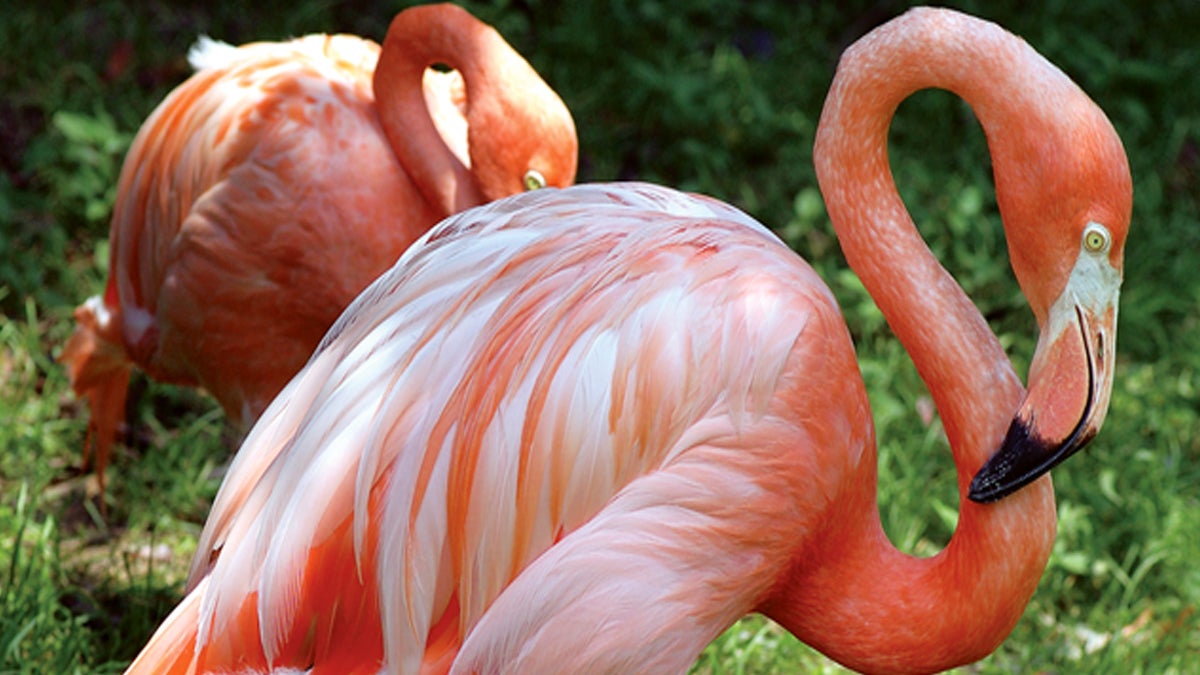Why do flamingos stand on one leg? A Hawk might have the answer
Listen
Two of Anderson's research subjects on view at the Bird Valley exhibit at The Philadelphia Zoo. (Courtesy of The Philadelphia Zoo)
The pattern is subtle, but the pink squiggles on Dr. Matthew Anderson’s blue silk tie are definitely tiny flamingos.
Anderson is an experimental psychologist and a professor at St. Joseph’s University (home of the Hawks). He specializes in research into animal behavior.
His latest subjects are a flock of 17 Caribbean flamingos housed at the Philadelphia Zoo. By observing their behavior, he tries to gain insight into human behavior.
Anderson’s investigation of flamingo resting behavior has led to several published papers on possible reasons for lateral preference – animals’ tendency to favor one side over the other.
“The big question that’s still out there,” said Anderson, “is why do most animals have lateral preference? Why are most people right-handed?”
In pursuing answers to that riddle, Anderson and his research team may have already solved one that has tormented flamingo watchers the world over. Why the heck do they stand on one leg? It may be that they are trying to stay warm.
“More resting flamingos tend to be on one leg when it’s cooler out. Also, when they are resting on the water instead of on land,” said Anderson.
In other words: Why stick both feet in cold water when you can keep one foot warm, tucked up against your body?
Anderson does not shy away from being the “flamingo guy” and even admits to having a plastic one on his lawn.
“Flamingos are big, they’re beautiful, they’re iconic. It’s tough not to like them. “
Besides authoring over 20 scholarly articles and book chapters, Anderson recently wrote and illustrated a children’s book, “Pink Flamingos All Around“. It’s packed with kid friendly facts, like why the big birds are pink. (They eat a lot of shrimp and algae that, once digested, pigment their feathers, bill and legs.)
The book’s jacket promises “a fantastic frolic full of fabulous flamingo fun.” Which, come to think of it, sounds a bit like Anderson’s scientific work, as well.
WHYY is your source for fact-based, in-depth journalism and information. As a nonprofit organization, we rely on financial support from readers like you. Please give today.



